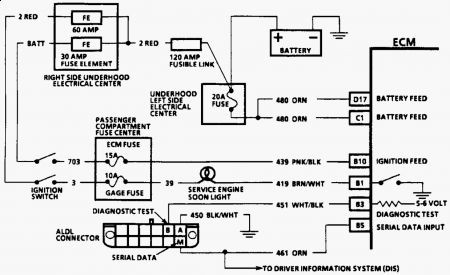Locating the OBD2 port in your 2006 Pontiac Grand Prix is the first step towards understanding and addressing any potential issues your vehicle might be experiencing. This port is your gateway to your car’s computer system, allowing you or a technician to read diagnostic trouble codes and assess the health of various systems. If your “Check Engine” or “Service Engine Soon” light is illuminated, the OBD2 port is where you’ll connect a scan tool to begin the diagnostic process.
The OBD2 port, standardized across most vehicles since 1996, is usually found within the passenger compartment. For the 2006 Pontiac Grand Prix, you can typically find the OBD2 port located beneath the dashboard on the driver’s side. It’s often near the steering column or in the vicinity of the pedals. You might need to look under the dash and possibly near the center console area on the driver’s side to locate it. It is a 16-pin connector, trapezoidal in shape.
Once you’ve located the OBD2 port, you can utilize a scan tool to perform a diagnostic circuit check. This check is crucial for determining if the Malfunction Indicator Light (MIL), also known as the Check Engine Light, is functioning correctly and if the Powertrain Control Module (PCM) is operational and capable of registering faults.
To initiate a basic diagnostic circuit check on your 2006 Pontiac Grand Prix:
- Turn the ignition to the “ON” position without starting the engine. Observe the Malfunction Indicator Light (MIL) on your dashboard.
- The MIL should illuminate and remain on steadily. This indicates the bulb is working. If the MIL does not light up, there might be an issue with the MIL itself or the circuit.
- Connect your OBD2 scan tool to the port. Follow the instructions provided with your scan tool to establish a connection with your vehicle’s computer.
- Use the scan tool to check for diagnostic trouble codes (DTCs). The scan tool will communicate with the PCM and retrieve any stored fault codes.
If the MIL is flashing as soon as you turn the ignition on, this could indicate a short circuit in the diagnostic test terminal wire. If the MIL is on steady and no codes are present, or if the MIL does not illuminate at all, further troubleshooting is required.
Understanding the behavior of the MIL is important in the diagnostic process. A steady MIL generally indicates a detected fault, while a flashing MIL often signifies a more severe or emission-related issue. Retrieving and interpreting the diagnostic trouble codes using your OBD2 scan tool will provide valuable information for diagnosing and repairing your 2006 Pontiac Grand Prix.
 OBD2 Diagnostic Circuit Check Diagram for 2006 Pontiac Grand Prix showing DLC connector and test points.
OBD2 Diagnostic Circuit Check Diagram for 2006 Pontiac Grand Prix showing DLC connector and test points.
Remember, while using an OBD2 scan tool can provide valuable insights, some issues may require professional diagnostic equipment and expertise. If you are unsure about interpreting the results or performing repairs, it’s always recommended to consult a qualified automotive technician. Regularly checking your 2006 Pontiac Grand Prix’s OBD2 port for potential issues can help maintain your vehicle’s performance and prevent more significant problems down the road.